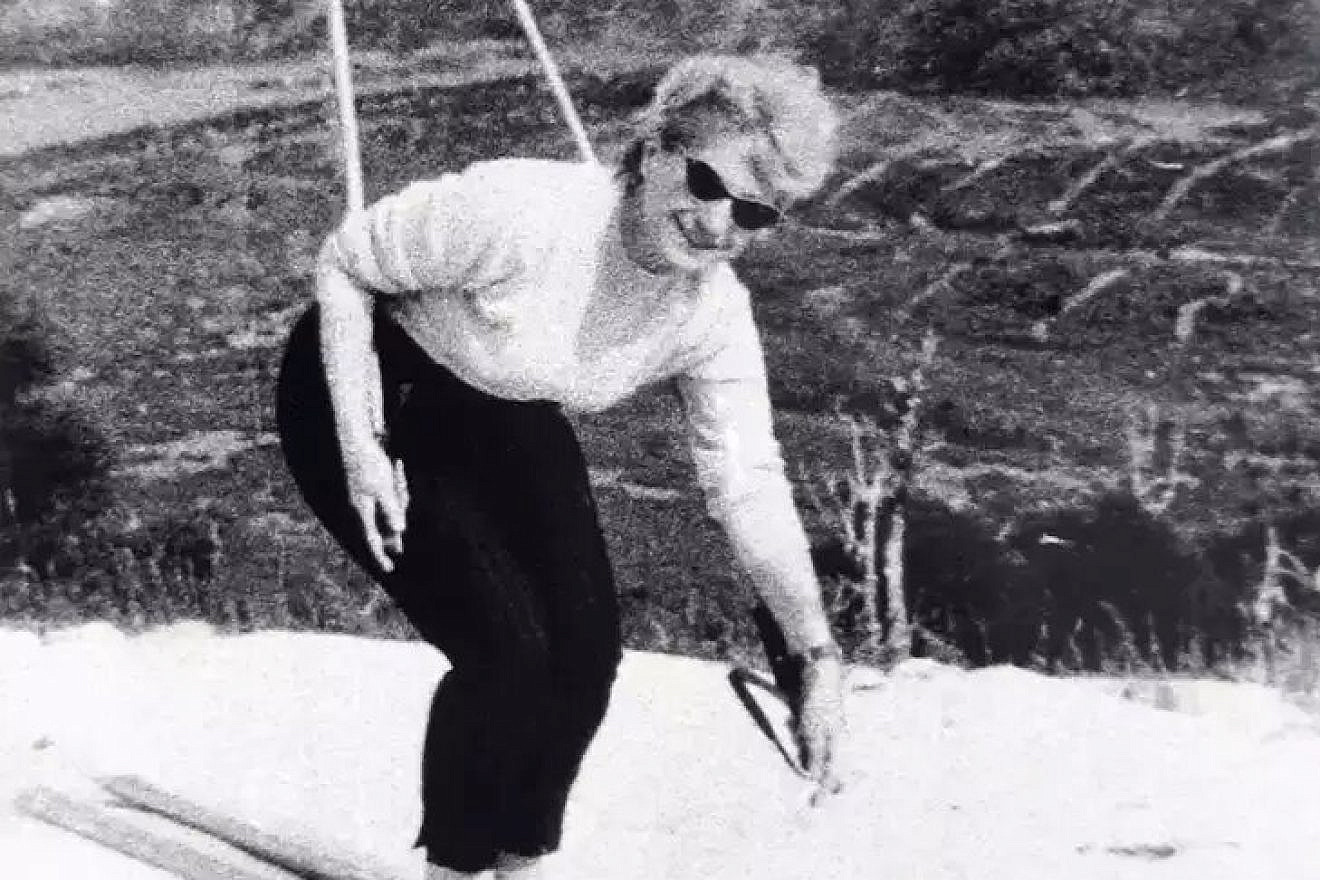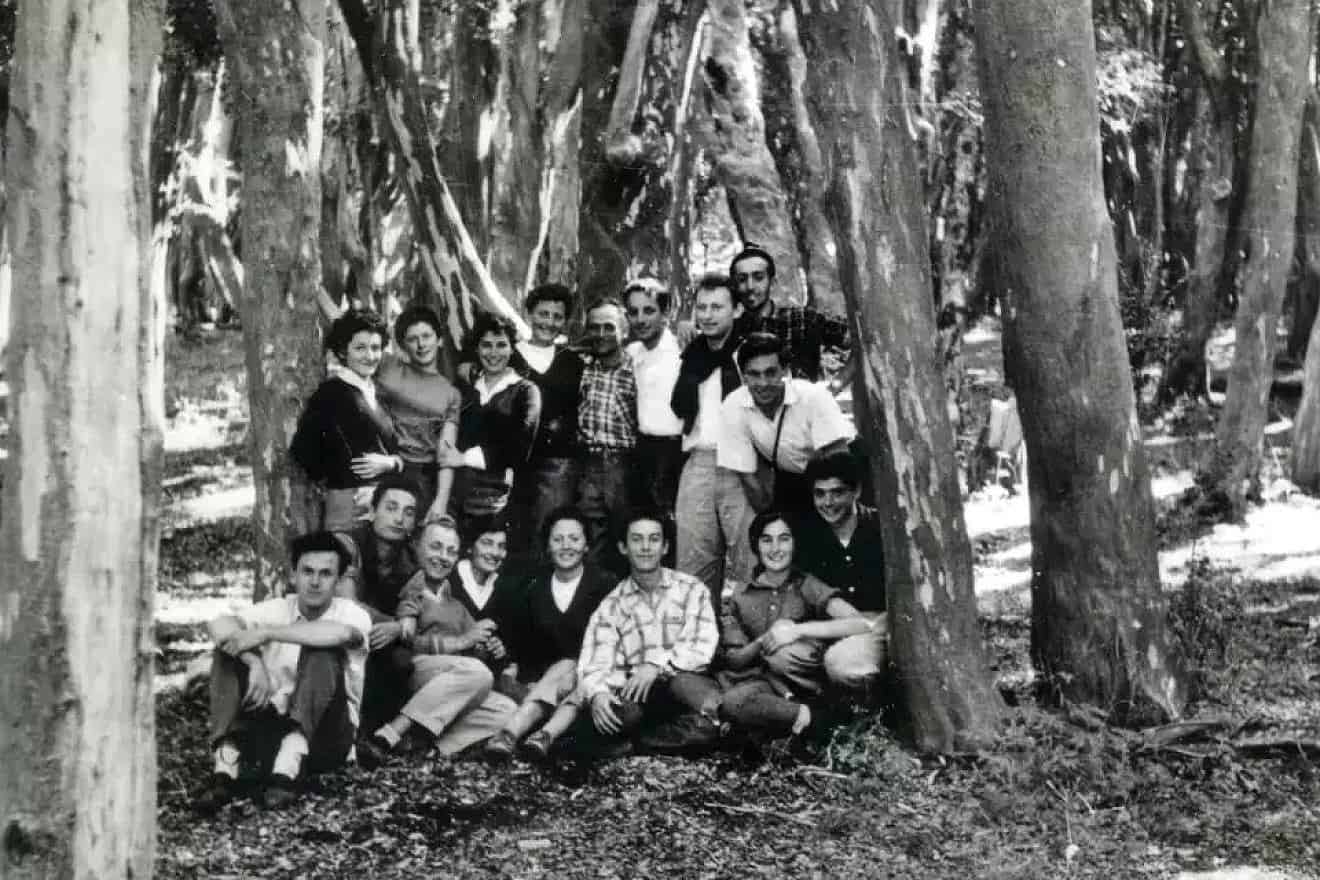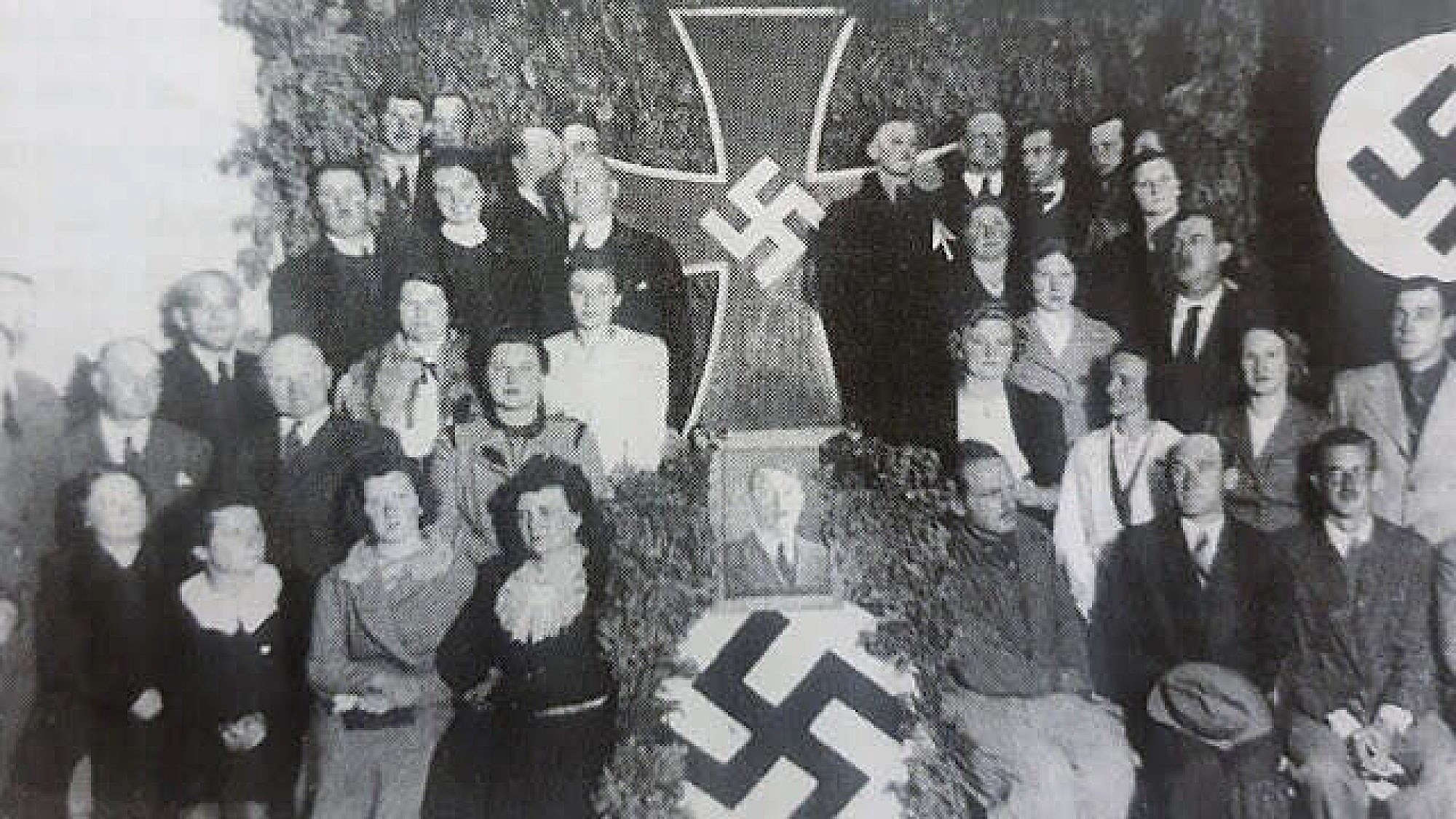n March 23, 1961, the Israeli press published a report that looked like it had been taken from an overly imaginative Hollywood movie. “She followed Mengele in Argentina—and was murdered,” the headlines screamed.
“The mysterious secretary of the Israeli delegation in Cologne was apparently ‘executed’ by Nazi agents, who had found out that she was one of the Israeli commandoes hunting Nazi war criminals who found refuge in Argentina,” the reports claimed.

The mysterious Israeli woman’s name was Nurit Eldad—she was also known as Eldod, Eldot and Eldok—and the news report was the first clue to the extraordinary story of her life and death.
The day after the sensational report, the claims that Eldad had been killed while carrying out a spying mission on senior Nazi officials were vehemently denied.
“Nurit Eldod, a victim of an accident in the mountains of Argentina, was not murdered by Nazis,” wrote the Davar newspaper, which stated that she “perished while hiking in the mountains of southern Argentina.”
The vigorous denials were effective. The story of Eldad’s death and the jaw-dropping news that she was murdered by Josef Mengele, the infamous Auschwitz doctor who selected who would be sent to the gas chambers, who to be experimented on and who would go to hard labor, were dismissed.
However, we can now reveal for the first time the testimonies of several people who were with Eldad on the trip where she died. These reveal that no one saw her fall to her death. The testimony of rescue personnel indicated that she was found with her backpack and belongings lying neatly next to her—and seemed to contradict the reports that denied foul play.
This did not prevent Isser Harel, who was director of the Mossad from 1952 to 1963, from publishing a statement in the Maariv newspaper in June 1985 that categorically asserted: “This story has been circulating in various versions for years in the world media. But whenever I was asked about it, including recently, I denied it outright. There never was an ‘Israeli agent’ who was infiltrated by the Mossad into Mengele’s vicinity and murdered by him.”
In the years since not a single historian researching the Mossad operations has found out any details of the story of Eldad’s death. In 2007, the Mossad’s history department published a large volume detailing the organization’s extensive efforts to get its hands on Mengele. The volume contains not a single word about Eldad and her story remains an enigma.
Who was Nurit Eldad?
Eldad was born in Frankfurt on Dec. 12, 1912, as Nora, the eldest daughter of a wealthy family of furniture manufacturers. When the Nazis came to power, her father, mother and seven children emigrated to the village of Rivera, Argentina. Nora, then 23, decided to make aliyah and change her name to Nurit.
On Sept. 2, 1934, after a period of training in France, she went to live on Kibbutz Na’an and later married a member of the kibbutz, but her marriage ran aground and she divorced, left the Kibbutz, and moved to Tel Aviv, where she purchased an apartment at 85 Sokolov St. She worked as a kindergarten teacher, married and divorced again, without having children.
Osnat Avigdori, whose mother and Eldad were cousins, remembers family get-togethers with her “fair-haired” relative.
Q: Did you know anything about her work? There were rumors that she was connected to the Mossad, spying on Nazis.
Avigdori: “My mother passed away believing that Nurit was murdered for spying on senior Nazis. Her grave says she died a martyr’s death. Why is that?”
In 1958, Eldad began working in the Commercial Department of the Israeli Foreign Ministry. A few months later, she was sent to Cologne, Germany, where she worked as a document translator for the delegation dealing with the issue of reparations from Germany, headed by Felix Shinar.
Shinar played an important role in the capture of Adolf Eichmann—he was the man who passed on the report from Fritz Bauer to Harel about the whereabouts in Argentina of the architect of the Final Solution.
Documents obtained by Israel Hayom indicate that in 1960, Shinar was also involved in tracking Mengele’s whereabouts.
A few months earlier, in late 1959, Eldad traveled to Argentina to visit family. Her sister said in an interview that Eldad told the family that she had begun working in Buenos Aires for a Jewish lawyer named Jose Moskovitz who played a central role in the daring operation to capture Eichmann.

A deadly trip
At the beginning of April 1960, a month before Eichmann’s capture, Eldad and a man named Dov Zin participated in a trip with 18 members of a United Kibbutz youth movement group who were preparing to make aliyah.
She never returned from that trip.
Melech Ziv (who is now 84) was one of the youths who participated in the training trip. He has vivid memories of Eldad and Zin. “Although they were described to us as a couple, they did not behave as a couple. I didn’t see any intimacy between them,” Ziv says.
“At first I couldn’t figure out the connection between them, whether they were relatives or friends,” recalls Miriam Zubinski, 83, who also took part in the training trip and was among the last to see Eldad alive. “They certainly weren’t a couple,” she states. “Nurit was several years older than him and there was no relationship dynamic between them.”
As part of the trip, the group traveled to the picturesque town of Bariloche, a favorite haunt of Israeli backpackers to this day and also known as the residence of many Germans and a hiding place for Nazi criminals.
Zin and Eldad spent about three weeks with the group in Bariloche.
“It was a beautiful trip,” Ziv recalls. “The last morning we got ready to make the return journey. Three guys wanted to go and develop some photos before leaving for Buenos Aires.
“Eldad belatedly said that she also wanted to go with them. She walked behind them alone, and when we got downstairs it turned out that she was gone. No one saw her, not the guys who went down early and neither did we, who were in the group that went down after them. We were very worried and ran all the way back, but Nurit was nowhere to be seen.”
A martyr’s death
When the group’s efforts to locate Eldad failed, they decided that Zin and Ziv would remain in Bariloche to supervise the search. “We informed the police that she was missing, and local search and rescue teams began looking for her,” says Ziv.
“On the fourth day, the police said they said they had found her dead.”
Q: What did you do after the police found her body?
Ziv: ” … I was asked by the police to identify her body and I remember the whole process, the entrance to the morgue. Finally, we got to her and I saw that her body was well-preserved. I didn’t see any sign of injury. She was even smiling, and I saw her teeth. I immediately said it was her.
“I boarded a special train to Buenos Aires with the coffin, but halfway through the police stopped us and the commander told me to leave the body with him. He said they would pass it on to her family. They took the body away from me and I didn’t know what they had done with it. Later I found out that she was buried in her family’s village.”
Eldad was buried in Rivera and her tombstone read: “She died a martyr’s death in Bariloche.”
Zubinski recalls: “I remember that reports began to come out that Nurit and Dov were connected to the Mossad. We saw the Germans in Bariloche, so we put one and one together, and in retrospect, we understood what they wanted. At that time, Eichmann was also caught, so everything fell into place.”
After the reports were published, the police came one day to the home of Zubinski’s parents, but she had already left Argentina for Israel.
“When my parents told us that the police were looking for us, I understood that everything was a cover-up, that they were with the Mossad and were looking for Germans. To me personally, it’s crystal-clear that they [Eldad and Zin] were there on active duty.”
In the dark of night
Ziv returned to Buenos Aires, where he served as educational director for the youth movement for another year. In March 1961, the newspaper La Razon reported that Argentine authorities were investigating the death of a woman found dead in the Bariloche Mountains a year earlier.
According to the report, the woman was an Israeli agent trying to track down Mengele. The newspaper said that “Nora Eldok” was an Israeli who showed up one day at a resort in the Bariloche mountains.
The newspaper believed that the woman was murdered by a group of Nazis protecting war criminals hiding in Argentina. “The West German and Israeli embassies declined to comment,” the La Razon report concluded.
La Razon relied on an Argentine intelligence report leaked to the newspaper that contained a detailed description of the incident. According to the report, Eldad was part of an Israeli commando squad trying to track down Mengele.
A few days before La Razon published its report, Israeli embassy officials came to Ziv and urged him to come with them urgently to the embassy.
“I was at the embassy for several days while the whole world was looking for me,” he recalls. “The kibbutz movement people at the embassy hid me, and when it was reported that senior Nazi officials had murdered Nurit, I understood the connection.
“A few days later, I was smuggled out to Israel. Since then, all my life, I made sure not to visit Argentina, and in fact, did not return to my homeland until a few years ago. To this day, no one has told me why they had to smuggle me out.”
As for Mengele, in January 1945 he fled to Czechoslovakia, was captured by the U.S. Army, and held as a prisoner of war but was released after they could not determine his true identity. In 1949, he managed to leave via Italy for Argentina, and from the mid-1960s the world’s most wanted Nazi criminal lived on the farm of a German couple near Sao Paulo, Brazil. He drowned in 1979 after suffering a stroke while bathing at Bertioga Beach near São Paulo and was buried under the name Wolfgang Gerhard.
Itai Amikam is an investigative report for the Kan 11 TV program “Zman Emet.“
Originally published by Israel Hayom.


























